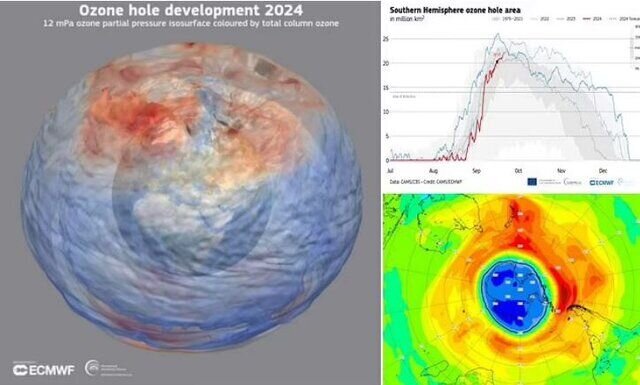WMO: ozone layer on the road to recovery

TEHRAN –The World Meteorological Organization (WMO) has highlighted the growing evidence that the ozone layer is indeed on track to long-term recovery.
Issuing its annual WMO Ozone and UV Bulletin on September 16, WMO says atmospheric abundances of tropospheric chlorine and bromine from long-lived ozone-depleting substances have continued to decline.
Given that some ozone-depleting substances also function as greenhouse gases, their phaseout is an added bonus for the climate, it says, whilst stressing the need for continued monitoring and to avoid complacency.
“The ozone layer, once an ailing patient, is on the road to recovery,” said UN Secretary-General António Guterres in a message.
“At a time when multilateralism is under severe strain, the Montreal Protocol to help protect the ozone layer stands out as a powerful symbol of hope.”
If current policies remain in place, the ozone layer is expected to recover to 1980 values (before the appearance of the ozone hole) by around 2066 over the Antarctic, by 2045 over the Arctic, and by 2040 for the rest of the world.
The bulletin was published to coincide with World Ozone Day, which celebrates the most successful environmental treaty of all time - the Montreal Protocol, which led to the phaseout of damaging ozone-depleting substances.
In 1994, the United Nations General Assembly proclaimed 16 September the International Day for the Preservation of the Ozone Layer, commemorating the date of the signing, in 1987, of the Montreal Protocol on Substances that Deplete the Ozone Layer.
The phase-out of controlled uses of ozone-depleting substances and the related reductions have helped protect the ozone layer for this and future generations.
Consequently, the protection of the layer has contributed significantly to global efforts to address climate change and has protected human health and ecosystems by limiting harmful ultraviolet radiation from reaching the Earth.
The theme for the celebration this year is "Montreal Protocol: Advancing Climate Actions".
This year, the event not only celebrates the achievements to date but also looks to the future for deeper and faster action under the Montreal Protocol.
Deeper and faster for the ozone layer but above all, for people, for climate, and for the planet.
The principal aim of the Montreal Protocol is to protect the ozone layer by taking measures to control total global production and consumption of substances that deplete it, with the ultimate objective of their elimination on the basis of developments in scientific knowledge and technological information.
MT/MG
